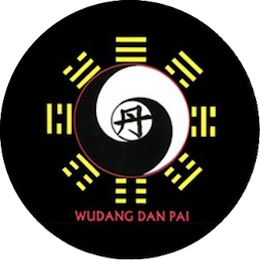Wudang Sword 武當劍
Wudang Sword is the main element of Wudang Dan Pai. It is one part of the Wudang martial arts curriculum that was handed down by the Daoist Immortal,Zhang San-Feng (张三丰), who lived in the 12th century China. Zhang San-Feng taught his art to nine disciples, who in turn created their own branches (or “Pai”)of Wudang Gong Fu. His last disciple, Zhang, Song-Xi (张松溪), founded Wudang Dan Pai (武当丹派).
Wudang Sword uses delicate techniques along with lightning fast movements. Wudang sword goes from slow to fast and soft to hard in an instant. Attacks can be straight-line or circular. Low postures are utilized along with high jumps in the air. It is this combination that makes Wudang Sword one of the most famous and sought after sword arts in China’s history.
The traditional Wudang Sword system was passed down to Master Chang, Wu Na and Dr. Lu, Mei-hui by Grandmaster Ma, Jie (马杰) who was the 12th generation Gatekeeper of Wudang Dan Pai. The system consists of one sword form (132 movements in 6 sections), a two-person fighting form, sword and Daoist fly-whisk combined form, “flying sword” techniques (throwing knives), and sword sparring, among others. This system has been recognized as the most authentic Wudang Sword system by Wudang Mountain. Its techniques are direct and powerful.
Also taught by the academy is the rarely seen Wudang Continuous-Stepping Sword (武当行剑). This is was passed down to Master Chang, Wu Na and Dr. Lu, Mei-hui by Grandmaster Qian, Timing (钱惕明). This form was created in the early part of the 20th century by the great master Li, Jing-lin (李景林) who was the most famous swordsman of his day. He combined the traditional Wudang Sword techniques that he learned from his master in a form that simulated the energy of Wu Jian (舞剑), the dancing sword. This style was promoted by Grandmaster Li to his early disciples, but was given up in lieu of a more direct approach later on. Because of this, in recent times there have become two branches of Wudang Dan Pai. One branch focuses on the 6 section form with its direct approach and practices, and the other branch focuses on the Continuous-Stepping form.
Master Chang, Wu Na and Dr. Lu, Mei-Hui are the only two individuals who have become disciples of both branches. Not for a hundred years has the system been taught as completely as it is taught in the Wudang Internal Martial Arts Academy.
Students of the academy will learn several forms for Wudang Sword representing both branches. Students will be exposed to the vital four and thirteen techniques that make up the backbone of Wudang Sword movements. They will practice on both hands and will be trained in several two-person sword fighting forms.
Students will also be trained in full-contact sword sparring with practice swords. Our sword sparring utilizes 13 defensive positions, as well as employing the 13 techniques for defense and offense.
In sword sparring, we have three levels of practice:
- Level 1: Fixed Step Sparring - this trains a high level of sword ability in defense as stepping is forbidden.
- Level 2: Triangle Sword Sparring - this trains more intercepting sword techniques as well as introducing footwork and use of angles.
- Level 3: Free-Step Sword Sparring - this focuses on fluid footwork and flexible body techniques for defense and to create better opportunities for attack.
In addition to these three levels of practice, we also employ the three heights in sparring. The three heights are: Heaven, Human, and Earth. Human height is the most typical height used for dueling and combat. This allows the student to move freely in a regular standing position height. Earth height is used for when the student is sitting or lying on the ground. This is used to simulate if the student is injured or if they are ambushed while resting. Heaven height is the least used but still practiced in the academy. It is characterized by light hopping and jumping. This height is designed to combat opponents on a higher platform such as mounted cavalry, or when fighting on unsteady terrain.
We also engage in multiple opponent sword sparring and team sword sparring in our classes. This allows the students to train with the combat mindset that was practiced in the ancient times. Students wear safety gear to avoid injuries when training.
Wudang sword is also a powerful health art. By utilizing the sword to focus the mind, the student will learn to calm their emotions, deal with stress, strengthen their body, and increase external and internal flexibility.
Techniques taught include but are not limited to the following:
- Wudang Sword Basics (Yin-Yang Sword Changes, Basic 4 and 13 Techniques)
- Wudang Dan Pai Jian (Sword form in Six Sections)
- Wudang Dan Pai Xing Jian (Continuous-Stepping Sword)
- Wudang Jian Fo He Bi (Fly-Whisk and Sword Combined Form)
- Wudang Taiyi Shuang Jian (Double Sword Form)
- Wudang Wu Jian (High-Level Fluid Movement Practice)
- Wudang Liu Lu Dui Jian (Six Section Two-Person Sword Fighting Form)
- Wudang Shizhan Dui Jian (Two-Person Sword Combat Form)
- Wudang Nian Jian (Wudang Sticking Swords Matching Practice)
- Wudang San Jian (Wudang Sword Sparring)



